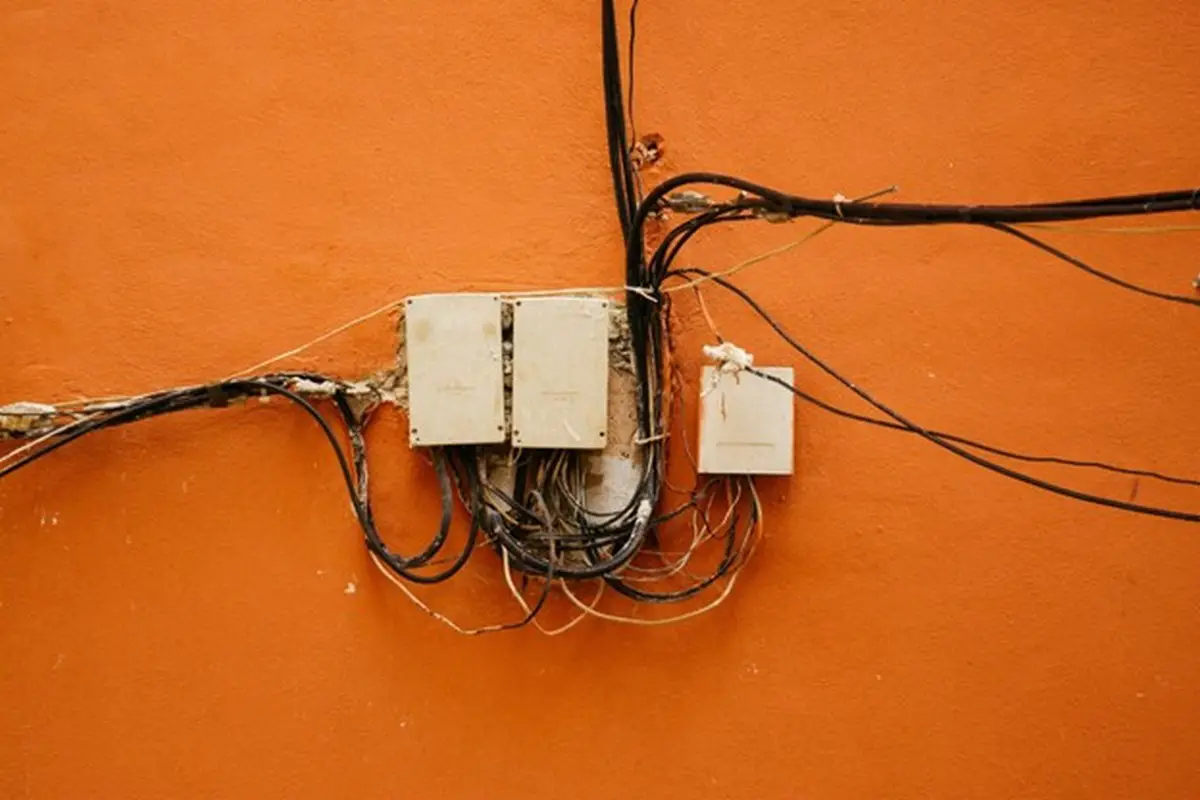How to run electrical wires in a finished wall, A homeowner’s guide to electrical inspections, safe property advice
How to Run Electrical Wires in a Finished Wall
15 February 2024
Embarking on a home improvement journey can be both exciting and challenging, especially when it comes to dealing with electrical installations.
From selecting the right tools to mastering essential techniques, ensuring safety and functionality is key to installing electrical wires in a home.
Whether you’re planning a renovation or adding new electrical outlets, understanding the nuances of concealing wires is crucial for achieving a polished look. Let us walk you through the intricacies of running electrical wires in a finished wall.
1. Hire an Electrician
Electrical work is not something you can do on your own. It not only requires a special set of skills but you must know all the safety protocols to follow, before meddling with electrical wiring. You can get severely electrocuted if you make a mistake or mess with the wiring without any know-how.
A professional will know their way around wires and other components, ensuring that your wiring is perfectly set in the wall and working efficiently.
You can find a decent electrician all over North America. So whether you want a St Louis Electrician or one in New Orleans, you will surely find one. Just make sure you check all the reviews before choosing to work with one.
2. Plan the Route
Planning the route for electrical wires in a finished wall is a crucial phase that involves meticulous consideration of various factors. It’s important to identify the locations of electrical devices like outlets and switches in the room.
You must familiarize yourself with the wall’s structure, identifying studs, fire blocks, and other impediments that may influence the wire route.
Safety is absolutely paramount. Avoid routes that may intersect with water pipes or gas lines, and document your plan comprehensively for reference during installation and future maintenance.
Careful planning ensures an efficient and safe electrical wiring route, which sets the groundwork for a successful installation.
3. Gather the Necessary Tools and Materials
Gathering the necessary tools and materials for running electrical wires in a finished wall is a critical step to ensure a smooth and efficient installation.
Start by assembling the essential tools, including fish tape for guiding wires through the wall cavity, a stud finder to identify structural elements, and a drywall saw for creating openings.
When purchasing materials, procure high-quality electrical wires suitable for your project’s voltage requirements. Cable staples will be needed to secure the wires to the studs at appropriate intervals. This would ensure a neat and organized installation.
4. Turn off Power
Before embarking on the process, it’s imperative to prioritize safety by turning off the power. Locate your main electrical panel and identify the circuit breaker corresponding to the area where you’ll be working.
If your electrical panel is labeled, find the specific breaker for the circuit in question; if not, enlist the help of a voltage tester to verify when the correct circuit is de-energized. Flip the identified breaker to the “off” position, ensuring that power is completely cut to the designated area.
5. Locate Studs
This is quite a crucial step because it provides a sturdy structure for securing wires and prevents accidental damage during installation.
You can locate studs by using a stud finder, a handheld device that detects changes in density behind the wall. Slide the stud finder horizontally across the wall until it indicates the presence of a stud.
Alternatively, visual cues such as electrical outlets, light switches, or baseboards can offer hints about stud locations, as these fixtures are typically anchored to studs.
When in doubt, gently tap the wall and listen for changes in sound; a solid thud indicates a stud, while a hollow sound suggests open space.
By accurately locating studs, you ensure a secure foundation for running electrical wires, this would minimize the risk of damaging the wall or compromising the structural integrity during the installation process.
6. Cut Openings
Cutting openings in the wall for electrical boxes is a critical step in running wires in a finished wall. Use a pencil to mark the precise locations of the electrical boxes, ensuring they align with your electrical device placements, such as outlets or switches.
Employ a drywall saw to carefully cut along these markings. It’s very important to exercise caution to avoid damaging existing wires or plumbing behind the wall.
As you cut, create clean and precise openings that match the dimensions of the electrical boxes. Also, take care to make the openings slightly smaller than the boxes, allowing for a snug fit. This attention to detail ensures a professional-looking finish once the electrical boxes are installed.
7. Run Wires
Running wires in a finished wall involves a strategic approach to ensure a clean and efficient installation. You can start this by using fish tape, a flexible and slender tool, to navigate the wires through the wall cavity.
Insert the fish tape into the opening created for the electrical box and carefully guide it through the wall, avoiding obstacles such as insulation or other wires.
Patience is key during this process, as slow and steady movements help prevent damage to the wires and ensure they follow the laid-down path drawn out in step one.
When the fish tape emerges from the destination opening, attach the electrical wires securely to it using electrical tape.
Gently pull the fish tape back, bringing the wires through the wall cavity. It’s important to ensure the wires are adequately secured along the path using cable staples, maintaining proper spacing according to local electrical codes.
8. Install Electrical Boxes
Installing electrical boxes provides secure enclosures for outlets, switches, or other electrical devices. Position the electrical box within the opening cut into the wall, ensuring it aligns precisely with your device placement. Secure the box to the wall studs using screws, ensuring a snug fit.
Once the box is securely mounted, feed the electrical wires through the box’s knockout openings, and then connect them to the corresponding terminals on the outlet or switch.
After wiring, gently fold the wires into the electrical box, avoiding any unnecessary strain on the connections. When this is done, attach the cover plate to the electrical box.
9. Organize and Secure Wires
This step ensures that the installation process is neat and efficient. You can make use of cable ties or clips to bundle and organize the wires, preventing them from sagging or becoming entangled. Ensure proper spacing between wires to adhere to local electrical codes and avoid interference.
Use cable staples to secure the wires along the wall studs, maintaining a tidy and organized layout. Take care not to over-tighten the staples, as this could damage the insulation around the wires.
10. Test the Installation
This is a critical final step to ensure the functionality and safety of the electrical installation. Before turning the power back on, double-check all connections and make sure wires are properly secured within the electrical boxes.
Test each outlet and switch with a reliable voltage tester to verify that power is reaching the devices.
Perform a series of functional tests by plugging in devices and flipping switches to confirm that each outlet and switch operates as intended.
If any issues arise during testing, immediately turn off the power and revisit the specific components for inspection and correction.
11. Close Up the Wall
Closing up the wall is the final phase of running electrical wires in a finished wall, and it involves carefully restoring the wall’s surface for a seamless and professional appearance.
Patch the openings created for electrical boxes using joint compound or plaster. Apply the compound evenly, filling any gaps or imperfections, and allow it to dry thoroughly. Sand the surface smooth once the compound is dry to create an even and polished finish.
For larger openings created during the installation process, use drywall pieces to bridge the gap. Secure the drywall with screws and cover the seams with joint compound or drywall tape.
Once the patches are dry, sand the entire wall to create a uniform texture. Paint the wall with matching paint to conceal any repairs and achieve a cohesive look.
Closing up the wall with precision and attention to detail results in a visually pleasing outcome, effectively concealing the wiring work and leaving your wall looking as good as new.
Conclusion
To sum this guide, mastering the art of running electrical wires in a finished wall is not just about ensuring a safe and functional electrical system, it’s about seamlessly integrating modern conveniences into your living space while maintaining its aesthetic appeal.
By following the detailed steps outlined in this guide, you’ve equipped yourself with the knowledge to tackle this essential aspect of home improvement confidently. Just make sure you hire a professional, because carrying out this process on your own would be difficult and dangerous.
Remember that safety is paramount throughout the entire process. Turning off the power, carefully navigating the wall structure, and following local electrical codes contribute to a secure installation.
As you close up the wall, taking the time to patch and paint meticulously ensures that the final result not only meets functional standards but also enhances the overall look of your living space.
Comments on this How to Run Electrical Wires in a Finished Wall article are welcome.
Electrical
Electrical / Electronics Posts
Wires are important with electrical equipment
7 ways how electricians can help you build a perfect house
3 awesome things a smart plug can do
Building
Residential Architecture Articles
Comments / photos for the How to Run Electrical Wires in a Finished Wall page welcome.





